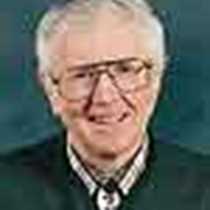Columbia River at Cape Disappointment
We caught a window of sunshine between frontal systems pounding in off the Pacific and hiked to Cape Disappointment Lighthouse overlooking the Columbia River bar and entrance.
This was the climax to our journey in the wake of Lewis and Clark. White combers smashed the cliff below and a sou’wester strummed through the Sitka spruce. We read from Capt. Clark’s Nov. 12, 1805, journal entry of 200 years ago on reaching this very spot.
“The men appear much satisfied with their trip beholding with satisfaction the high waves dashing against the rocks and this immense ocean.”
The lighthouse signals mariners with its long red and white flash. Since 1856, it is the oldest continuously operating lighthouse on the West Coast.
In the lee of Cape Disappointment, we looked at the snug anchorage by the U.S. Coast Guard Life Boat Training Station and tried to imagine Capt. Robt. Gray trading for sea otter pelts. In 1792, he was the first to bring his ship, Columbia Rediviva, across the Columbia’s bar, also know as “The Graveyard of the Pacific.” This provided our young nation with its first tentative claim on this area.
We also paused at Station Camp on the Washington shore after bussing across the Columbia from Astoria, Oregon, and recalled the desperate situation faced by The Corps. They were pinned to a rocky beach with constant rain and high winds and waves. To protect their five dugouts overnight from being pounded to bits, they piled in rocks and sank them temporarily. It was also here that the vote whether to fall back inland to winter or look for another winter site on the lee or Oregon shore was taken. That vote included York and Sacajawea.
We started our day with the Columbia River Maritime Museum next to our Astoria anchorage and thence to The Corps wintering site at Fort Clatsop where the replicated log fort recently burned to the ground. It was not arson as some suggested but most likely a fire in the log and clay chinked fireplace left unattended. A huge canopy temporarily covers the fort site while archaeologist pursue a fast dig for artifacts. Fort reconstruction is to start in mid December.
We caught a window of sunshine between frontal systems pounding in off the Pacific and hiked to Cape Disappointment Lighthouse overlooking the Columbia River bar and entrance.
This was the climax to our journey in the wake of Lewis and Clark. White combers smashed the cliff below and a sou’wester strummed through the Sitka spruce. We read from Capt. Clark’s Nov. 12, 1805, journal entry of 200 years ago on reaching this very spot.
“The men appear much satisfied with their trip beholding with satisfaction the high waves dashing against the rocks and this immense ocean.”
The lighthouse signals mariners with its long red and white flash. Since 1856, it is the oldest continuously operating lighthouse on the West Coast.
In the lee of Cape Disappointment, we looked at the snug anchorage by the U.S. Coast Guard Life Boat Training Station and tried to imagine Capt. Robt. Gray trading for sea otter pelts. In 1792, he was the first to bring his ship, Columbia Rediviva, across the Columbia’s bar, also know as “The Graveyard of the Pacific.” This provided our young nation with its first tentative claim on this area.
We also paused at Station Camp on the Washington shore after bussing across the Columbia from Astoria, Oregon, and recalled the desperate situation faced by The Corps. They were pinned to a rocky beach with constant rain and high winds and waves. To protect their five dugouts overnight from being pounded to bits, they piled in rocks and sank them temporarily. It was also here that the vote whether to fall back inland to winter or look for another winter site on the lee or Oregon shore was taken. That vote included York and Sacajawea.
We started our day with the Columbia River Maritime Museum next to our Astoria anchorage and thence to The Corps wintering site at Fort Clatsop where the replicated log fort recently burned to the ground. It was not arson as some suggested but most likely a fire in the log and clay chinked fireplace left unattended. A huge canopy temporarily covers the fort site while archaeologist pursue a fast dig for artifacts. Fort reconstruction is to start in mid December.




